Dynamic Strength
When playing any sport that requires a degree of athleticism, quality of impact makes all the difference in performance. It is therefore important to get the right balance of muscular strength and size, as well as power. For golfers it is all about the swing.
More than hitting the ball further, building the right level of strength and getting the core foundations in place prevents injury.
Previously we have looked at mobility, flexibility, core control and stability, rotation for power and speed, and most recently the importance of the glutes.
Golf is more dynamic than it is static, as such we should train similarly through:
• Different planes of motion
• Single leg exercises
• Deceleration and rotational drills
• Explosive drills
During 18 holes there are only a few occasions where you will have the perfect lie. To feel more grounded, there are a variety of fitness exercises that prepares the body for when you are faced with awkward lies on uneven ground such as in a bunker.
Performing these exercises that require 2 movements at the same time challenges the neurological system and improves the connection between the body and mind, thereby improving balance and coordination during the golf swing.
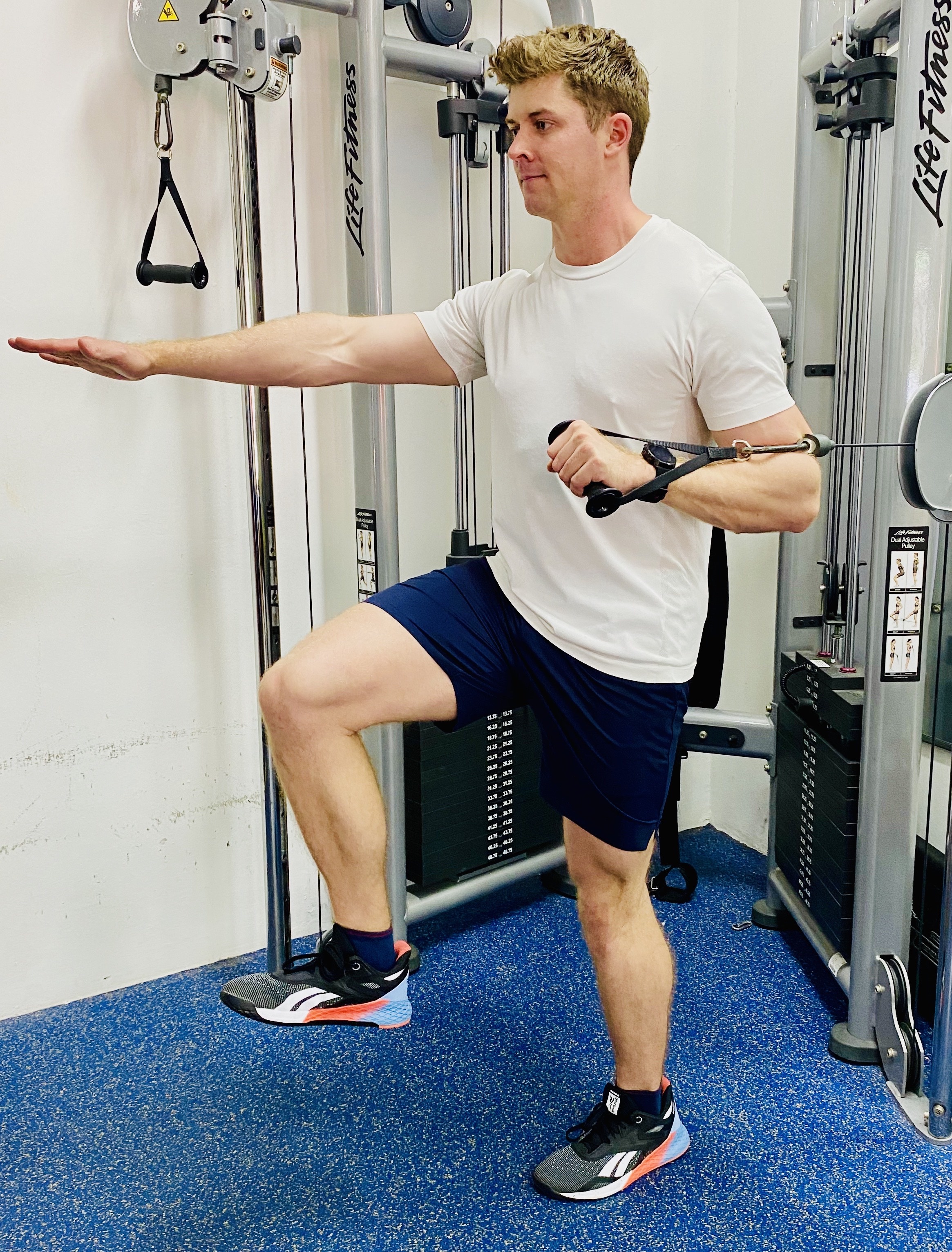
SINGLE LEG CHEST PRESS
There are 3 planes of motion – frontal (side to side), sagittal (front to back) and transverse (rotational).
In the past, golf fitness training was too rotational, working predominantly in the transverse plane. While good up to a certain point, the other planes of motion were neglected. Rotational exercises should therefore complement base exercises such as squats and hip hinging, as they require torque on the spine.
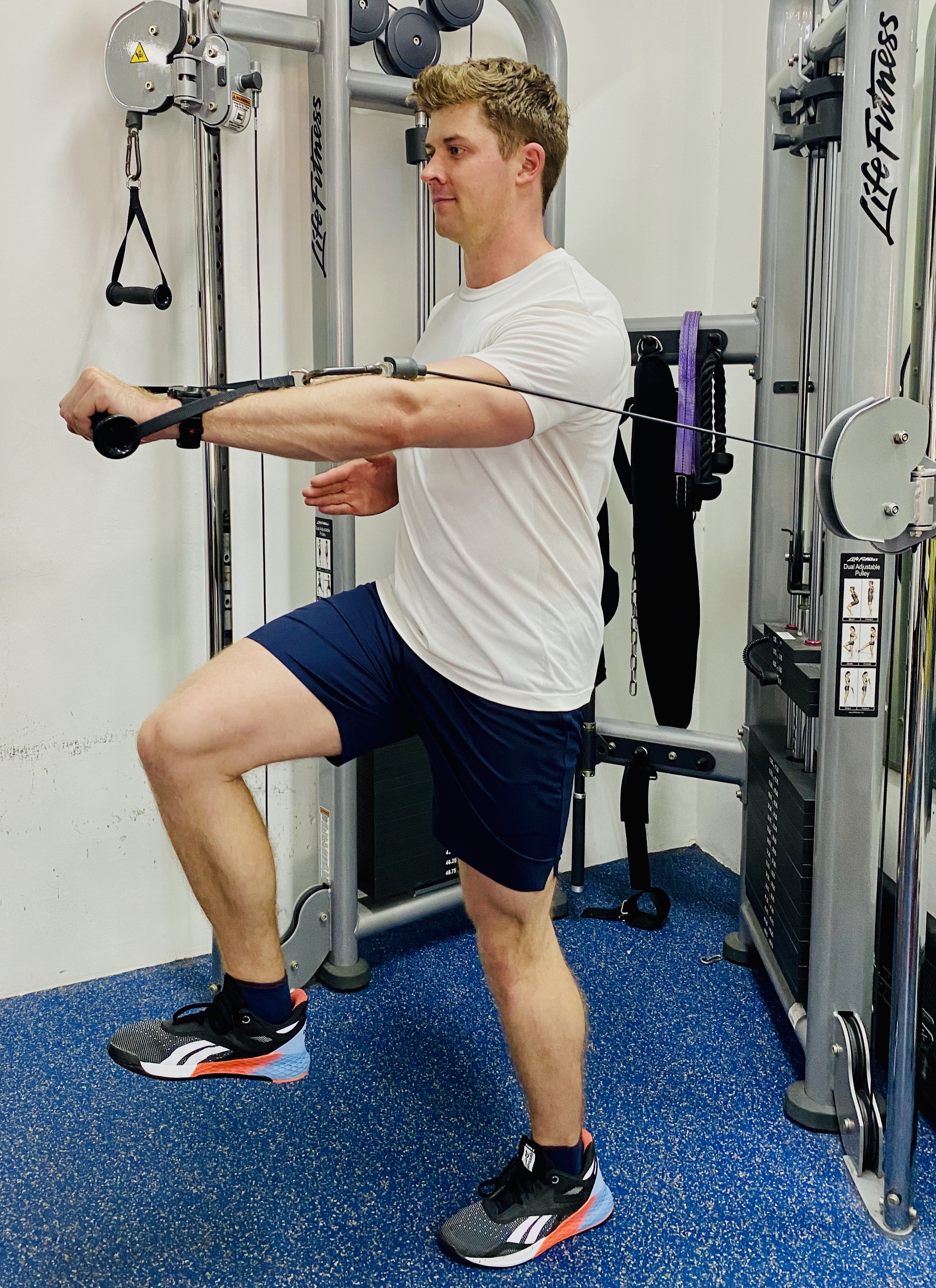
The Single leg chest press works in the sagittal plane, challenging single leg and shoulder stability and endurance.
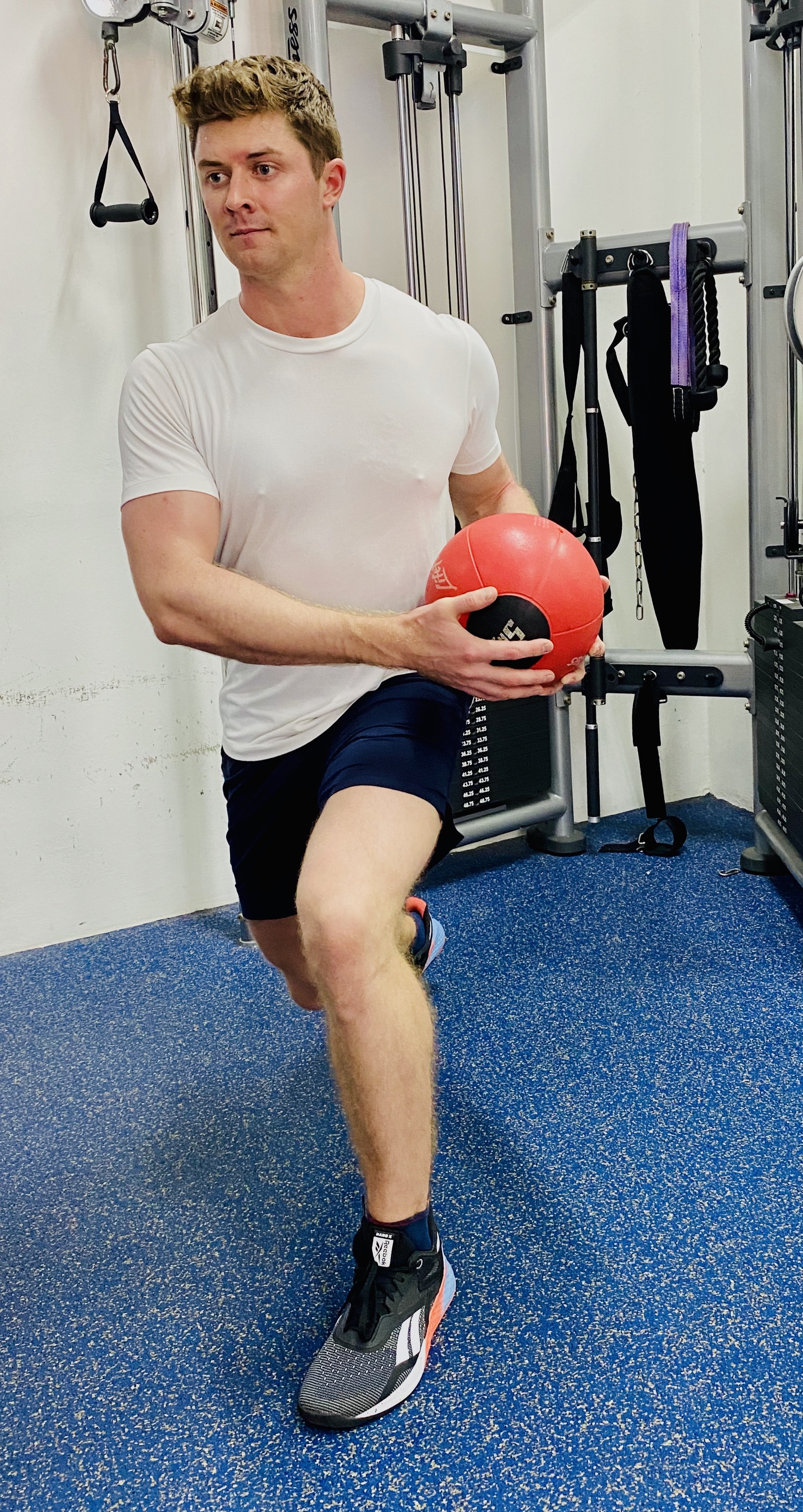
WALKING LUNGES WITH TWIST
A great exercise that combines strength, deceleration, as well as balance and coordination.
We have discussed previously the importance of training our ‘brakes’ in the Core. This carries over into the legs as it will help with learning how to load and withstand rotational forces during the golf swing.

It has been proven that there is a direct correlation between vertical jump height and driving distance. On the PGA Tour the average height in the vertical jump test is between 20”to 22”, with the longer hitters jumping upwards of 30”.
After learning the basics of how to properly hip hinge and perform a normal jump, the fun explosive training can be implemented into a program.
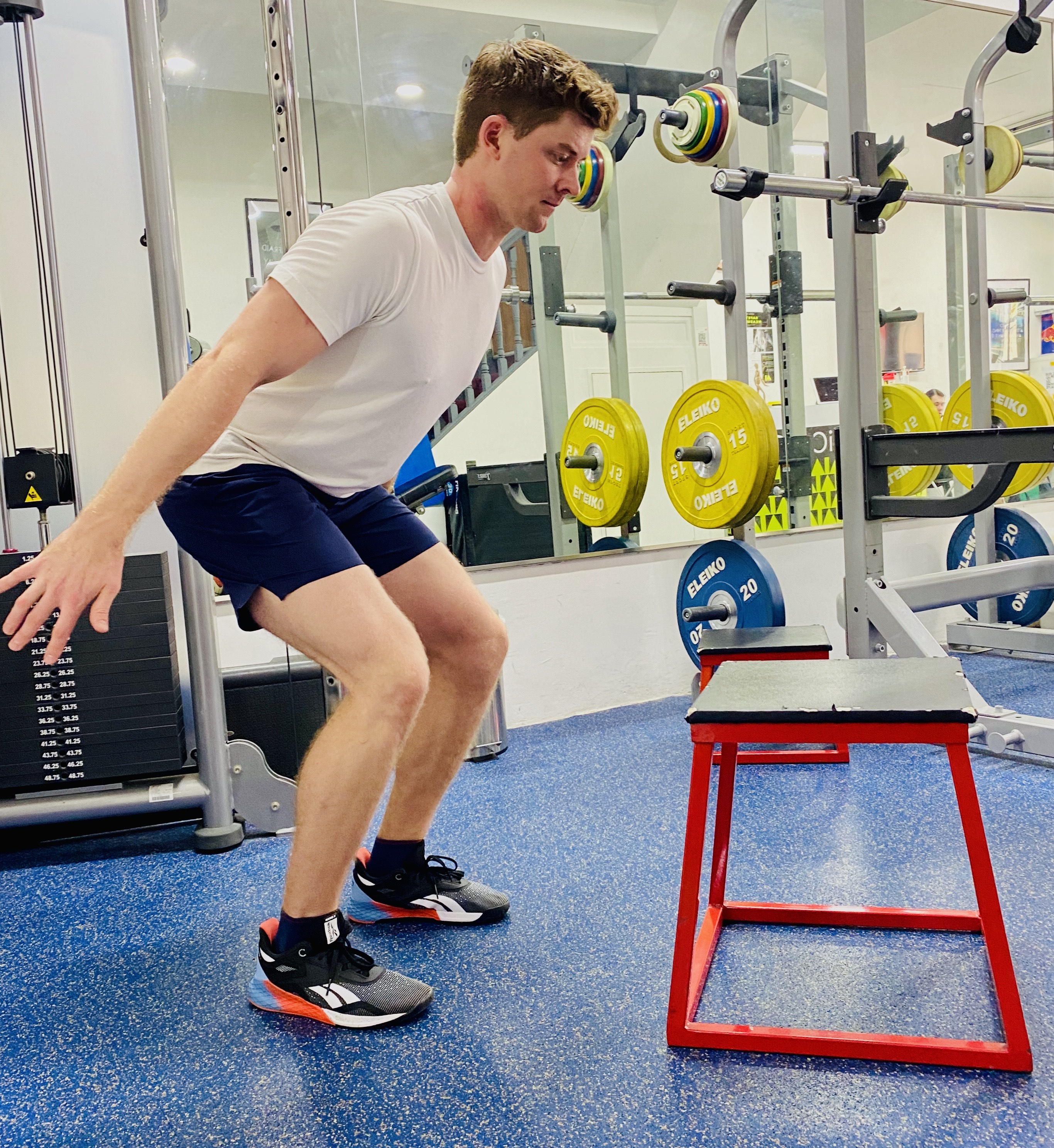
BOX JUMP
A staple explosive exercise is the Box Jump, which forces the body to learn how to get into triple extension, where the ankles, knees and hips are all extended to achieve maximal force.
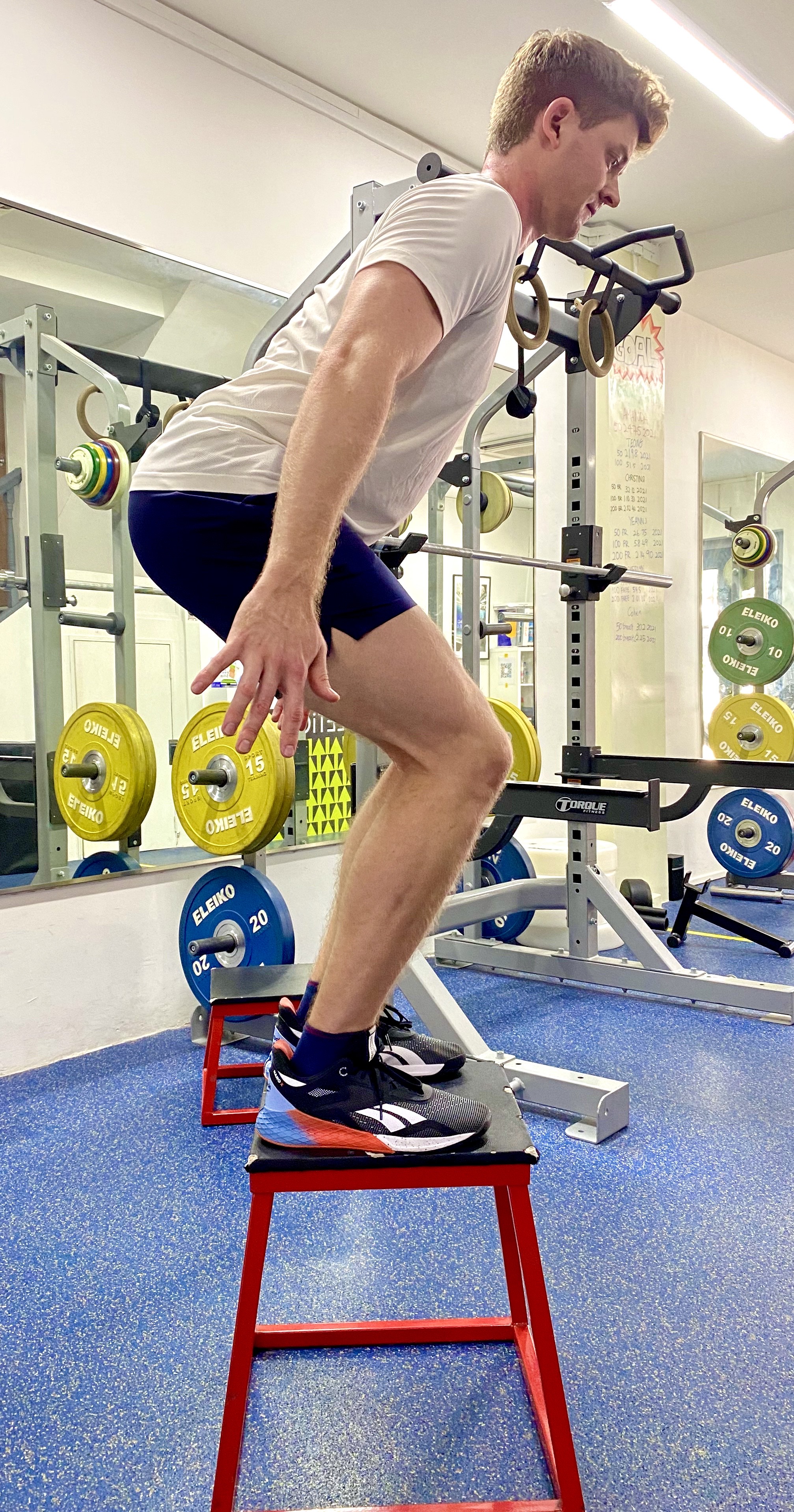
More and more, people are beginning to understand how much we use the ground during the golf swing. To hit it long, forces need to be applied correctly into the ground to get the necessary reaction. And although hard to mimic in the gym, what can be done is to learn how to explode vertically.
More posts

SCENIC WONDER AT INTERCONTINENTAL KHAO YAI
06 Mar 2024
PATTAYA GEMS: WHERE TO GOLF IN THAILAND
05 Mar 2024
TO GREATER HEIGHTS TOGETHER
04 Mar 2024
